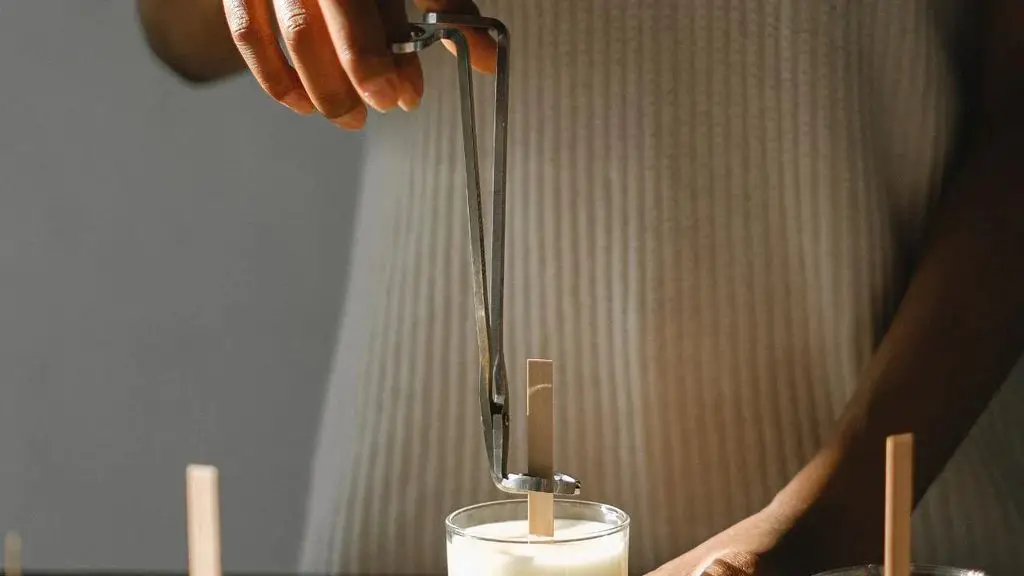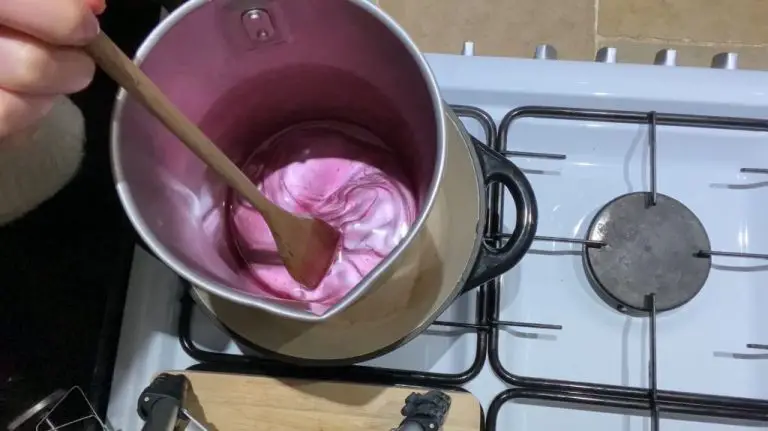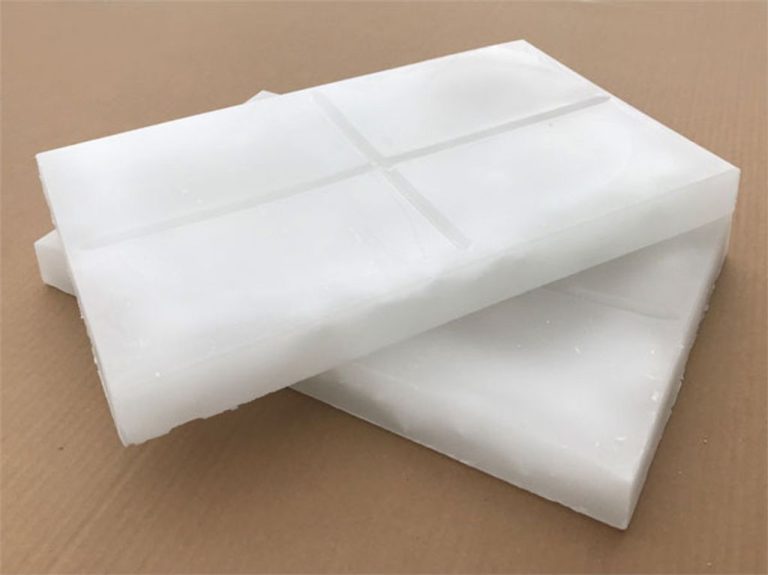How Do You Stop Wick Mushrooming?
What is Wick Mushrooming?
Wick mushrooming is when the top of a candle wick curls and expands into a mushroom-like shape as the candle burns (Cargill, 2022). It is caused by the rapid expansion and solidification of melted wax around the wick as the candle burns. The flame consumes wax faster than the wick can burn, so excess melted wax builds up on the end of the wick before hardening into a distorted, mushroom-like shape.
This effect increases as the candle burns down, resulting in the wick curls becoming larger and more exaggerated. Left unchecked, wick mushrooming can cause the wick to bend over into the melted wax pool, resulting in an uneven burn and tunneling of the candle. It also makes it harder for the wick to stay upright and draw fuel up to the flame. Severe mushrooming impairs the candle’s ability to burn properly.
Why Does Wick Mushrooming Happen?
Wick mushrooming occurs when the flame melts wax faster than the wick can burn it. This causes excess melted wax to accumulate at the tip of the wick, forming a mushroom shape. There are a few key reasons why this happens:
Having a wick that is too large for the melted wax pool can lead to mushrooming. A wick that is too wide or thick will burn too much wax compared to what melts from the heat of the flame. This creates an oversupply of melted wax at the tip 1.
High flame temperatures that rapidly melt more wax than the wick can burn off will also cause mushrooming. If the flame is too high, it will melt wax faster than the wick can absorb and combust it. This leads to excess buildup at the wick tip2.
Wicks made from materials with loose braiding can contribute to mushrooming as well. Tightly braided wicks absorb and burn melted wax more efficiently. Loosely braided wicks don’t absorb wax as quickly, allowing excess melted wax to accumulate at the tip.
Preventing Wick Mushrooming
There are a few key steps you can take to prevent wick mushrooming in candles:
First, make sure to trim the wick to the proper length for the candle diameter before lighting. As a general rule, the wick should be trimmed to 1⁄4 inch for containers less than 3 inches wide. For larger candles, trim the wick to 1⁄2 inch (source: https://suppliesforcandles.co.uk/candle-college/mushroom-wicks-avoiding-basic-issues).
Next, use the right thickness of wick for the type and diameter of candle. Thicker candles require thicker wicks to avoid mushrooming. Follow manufacturer guidelines for pairing wick size to candle diameter (source: https://www.cargill.com/bioindustrial/naturewax-mushrooming).
You can also lower the flame height to just below the tip of the wick, which reduces carbon buildup. Tall, roaring flames are more likely to cause mushrooming (source: https://suppliesforcandles.co.uk/candle-college/mushroom-wicks-avoiding-basic-issues).
Finally, apply wick inhibitors or treatments during manufacturing to reduce mushrooming. These special coatings prevent carbon buildup on the wick as the candle burns (source: https://www.cargill.com/bioindustrial/naturewax-mushrooming).
Fixing Mushroomed Wicks

Mushrooming is a common issue when burning candles, but fortunately it can be easily fixed in just a few steps:
First, make sure the candle has completely cooled before attempting to trim the wick. Once cooled, use a wick trimmer to carefully snip off the blackened, mushroomed part of the wick. Take care not to cut too much of the wick. According to Supplies for Candles, just removing the mushroom is sufficient to correct the issue[1].
After trimming, you can further fix the wick by gently rolling it between your fingers to tighten the braid again. This helps realign the wick fibers. You may need to trim a bit more of the wick if it remains misshapen.
If the mushrooming is quite severe, another option is to light the candle again to burn the mushroom to ash. Once it has burned down, blow out the flame and remove the ash residue from the tip of the wick. This essentially provides a fresh start for the wick[2].
With just a simple trim or quick burn, you can easily remedy a mushroomed wick and restore your candle back to its optimal burning state.
Choosing the Right Wick
Selecting the proper wick is crucial for preventing mushrooming and optimizing candle performance. The wick material, thickness, braiding, and tab attachment can all impact how the wick burns.
Natural fiber wicks like cotton and wood tend to mushroom less than synthetic wicks, though synthetics have improved over the years. Wooden wicks in particular produce less mushrooming due to their rigid structure.
Thicker wicks are less prone to mushrooming because they don’t bend and curl as easily when the melted wax pools around them. However, wicks that are too thick can lead to sooting. Finding the right thickness for your wax type is key.
Tight braiding of cotton or paper wicks makes them more rigid and resistant to mushrooming. Loosely braided wicks are more flexible and may bend into a mushroom shape.
Proper wick tab attachment to the base of the candle can prevent sideways wick bending that causes mushrooms. Use adequate adhesive and straight tab positioning.
Testing different wick types and sizes is the best way to find one that limits mushrooming for a particular wax and fragrance blend. Refer to manufacturer guidelines for recommendations.
Wick Length
Choosing the proper wick length is crucial for preventing mushrooming. According to Candle Science’s wick guide, the ideal wick length depends on the diameter of the container:
– For containers 3 inches or less in diameter, leave 1/4 inch between the bottom of the wick and the bottom of the container.
– For containers 3 to 4 inches in diameter, leave 1/2 inch between the bottom of the wick and the bottom of the container.
In either case, the wick should never touch the bottom of the container. Allowing space between the wick end and the bottom prevents mushrooming by reducing heat buildup at the base of the wick as the candle burns.
Lowering the Flame
One way to help prevent wick mushrooming is to lower the flame size. A smaller flame produces less heat, which can help reduce the rapid melting and evaporation of wax near the wick. According to Armatage Candle Company, turning down the flame helps restrict the melting to the top layer of wax rather than deeper down, allowing for more complete burning.
While lowering the flame can help prevent mushrooming, it may also initially produce more soot, since the flame temperature is cooler. The wick may start emitting more smoke until the wax pool adjusts to the smaller flame size. However, over time the lower flame can help stabilize candle burning and reduce mushrooming. It’s generally recommended to keep flame sizes small, trimming the wick if needed to maintain a dim glow rather than a large, flickering flame.
Wick Inhibitors
Wick inhibitors are additives that can help reduce mushrooming of candle wicks. Common wick inhibitors include zinc stearate and magnesium stearate. These metal stearates are added in small amounts to the wax when making candles.
The metal stearates coat the wick fibers and help resist absorption of wax into the wick (1). This prevents the wick from swelling into a mushroom shape as it burns. Wick inhibitors like zinc stearate make wicks more rigid and less likely to bend over into the wax pool.
While wick inhibitors can be useful for reducing mushrooming, they can also affect burn quality. Too much of the additive may cause wicks to curl, smoke excessively, or go out (2). Finding the right balance is important. Candle makers need to test different concentrations to optimize mushroom prevention without disrupting proper wick burning.
(1) https://www.candlescience.com/additives/uv-inhibitor/
(2) https://armatagecandlecompany.com/blog/uv-inhibitors/
When to Trim a Mushroom
It’s important to trim a mushroom carefully and at the right time. According to Armatage Candle Company, you should wait until the wax has completely cooled and solidified before attempting to trim a mushroomed wick. Trimming too soon can lead to issues like wax chipping or the wick snapping.
When you do trim, you only want to remove the very top black portion – about 1/8″ – of the mushroom. Cutting too much can impact how the candle burns. Supplies for Candles recommends just removing the cap and leaving the rest of the wick intact.
You also want to avoid trimming larger mushroom tops. Giant mushrooms should be straightened and allowed to burn off naturally. Only trim mushrooms that are still relatively small in size.
With the right timing and care, you can successfully trim a mushroomed candle wick. Just be patient, precise, and only remove what’s needed to allow proper burning.
Proper Candle Care
Proper candle care is crucial for safe candle burning. Here are some key tips for candle safety:
Always burn candles within sight. Never leave a burning candle unattended. Be sure to extinguish the flame if you leave the room or go to sleep. According to the National Fire Protection Association, you should “Keep candles at least 12 inches from anything that can burn.”
Use a sturdy, nonflammable candle holder. According to Candles.org, “Never burn a candle on or near anything that can catch fire.” A proper holder keeps the candle upright and contains dripping wax.
Allow candles to cool completely before moving them or touching the wax. According to the NFPA, “Consider using flameless candles in your home.” They don’t produce heat and don’t have a flame that can start a fire.
Trim the wick to 1/4″ before lighting to prevent smoking and uneven burning. Long wicks can cause mushrooms and flaring flames. According to Fmins.com, always “Trim the wick to 1/4 inch before lighting.”






